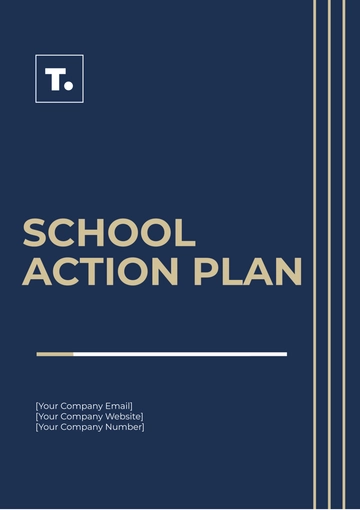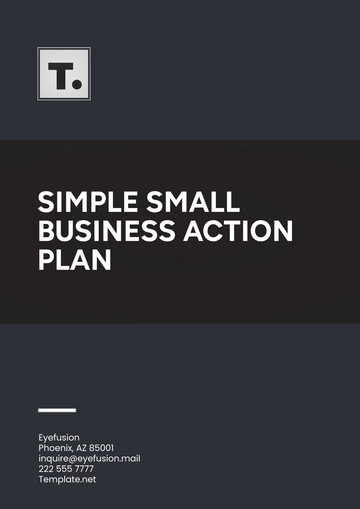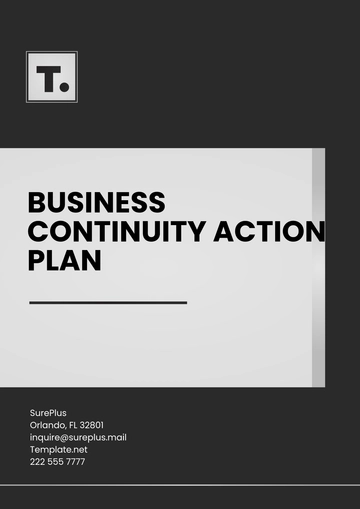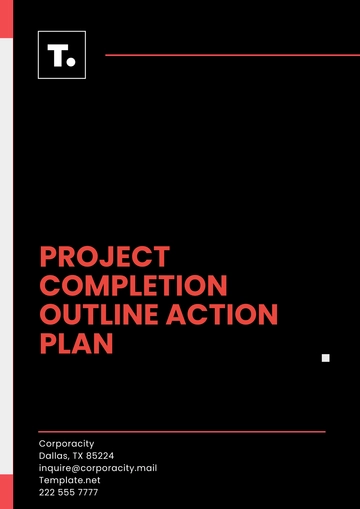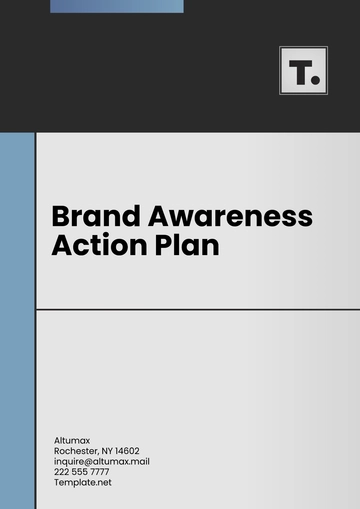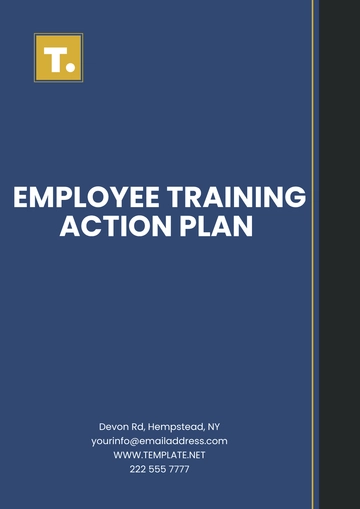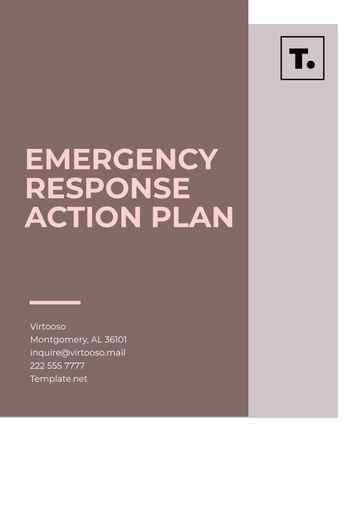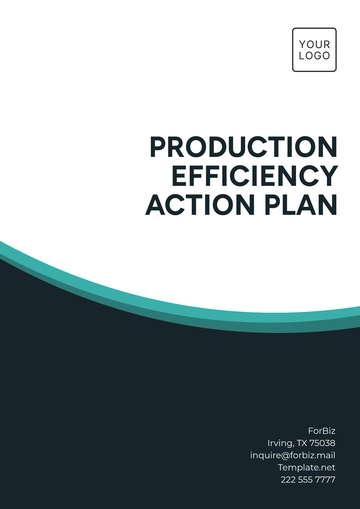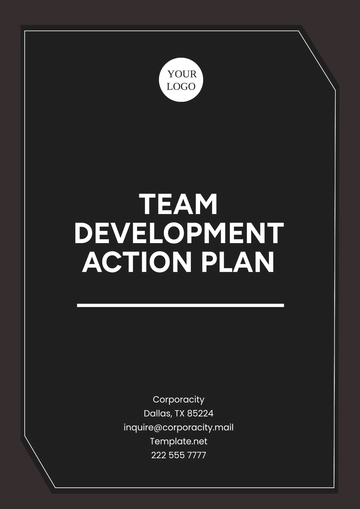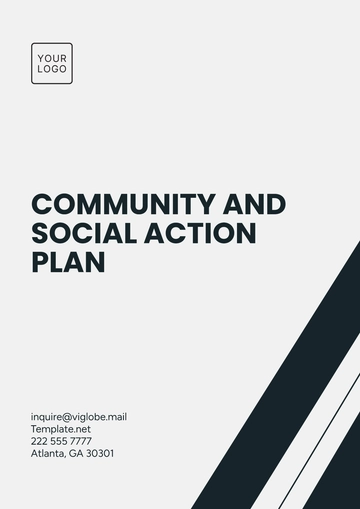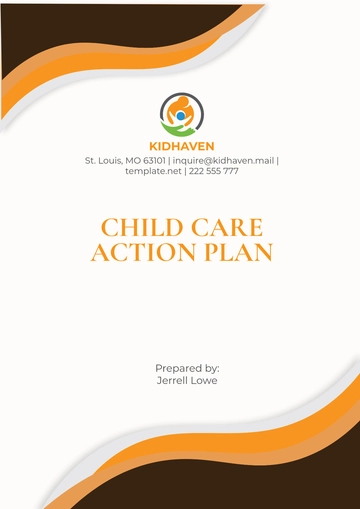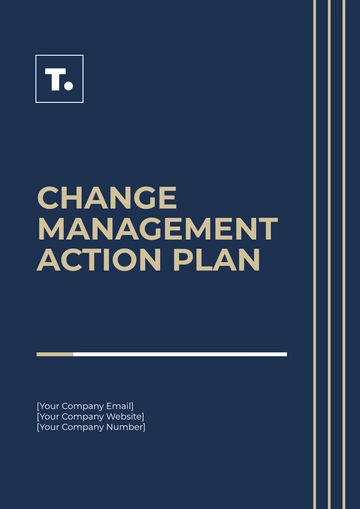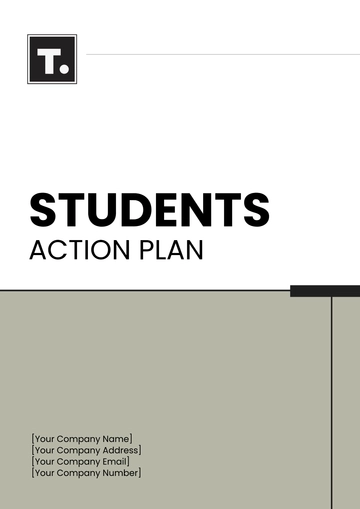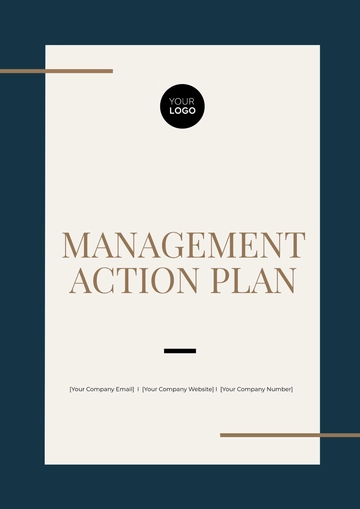Free School Training Strategy
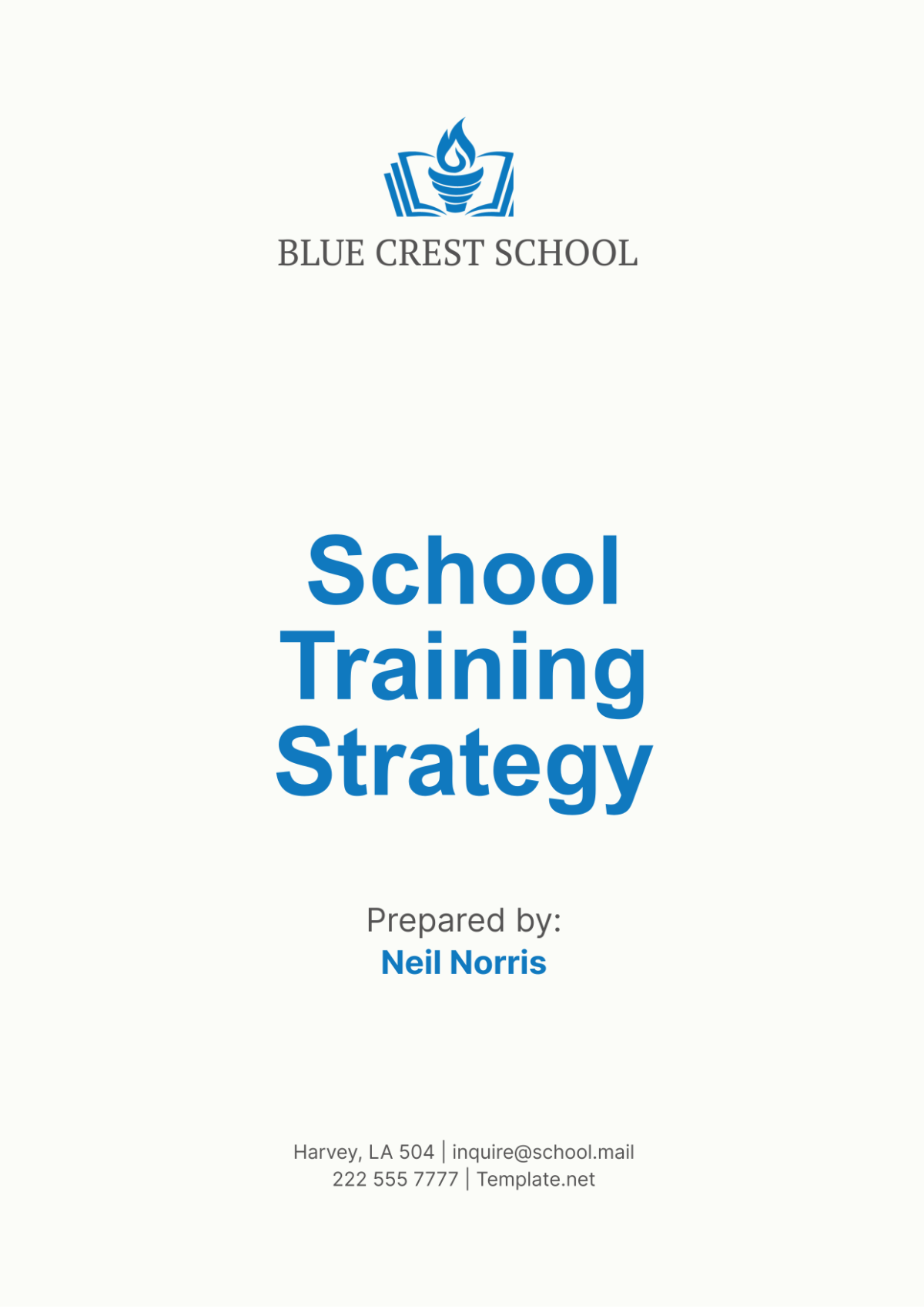
I. Introduction
In the evolving landscape of education, it is imperative for schools to continuously enhance the skills and knowledge of their staff. The School Training Strategy outlined by [Your Company Name] aims to provide a structured framework for professional development, ensuring that all staff members are equipped to deliver high-quality education and support to students. This document details the training programs, objectives, schedules, and evaluation methods to be implemented.
II. Training Objectives
The objectives of the training strategy are designed to align with the school's mission and goals. They provide a clear direction for the professional development efforts, ensuring that all training activities contribute to the overall improvement of the school environment. By setting specific, actionable goals, [Your Company Name] aims to create a supportive and dynamic educational experience for both staff and students.
1. Enhance Teaching Skills
Objective: Improve instructional techniques and methodologies to support diverse learning needs.
Detailed Explanation: Effective teaching is the cornerstone of student success. This objective focuses on equipping teachers with advanced instructional techniques and methodologies to cater to the diverse learning styles and needs of students. Training programs will include workshops on differentiated instruction, where teachers learn to tailor their teaching strategies to accommodate different learning abilities and styles, such as visual, auditory, and kinesthetic learners.
Key Components:
Differentiated Instruction: Workshops and seminars on how to customize lesson plans and teaching methods to reach every student effectively.
Active Learning Strategies: Training on incorporating active learning techniques such as group work, hands-on activities, and interactive discussions to engage students more deeply.
Assessment Techniques: Sessions on formative and summative assessment methods to monitor and evaluate student progress accurately.
Expected Outcomes:
Increased student engagement and participation.
Improved academic performance across diverse student groups.
Teachers equipped with a toolkit of strategies to address various learning needs.
2. Promote Leadership
Objective: Develop leadership skills among teachers and administrative staff to foster a collaborative and effective school environment.
Detailed Explanation: Strong leadership within a school fosters a collaborative and productive environment, essential for both staff and student success. This objective aims to cultivate leadership qualities among teachers and administrative personnel, empowering them to take initiative, drive school improvement efforts, and mentor others.
Key Components:
Leadership Workshops: Regular workshops focusing on leadership theories, practical leadership skills, and real-world applications within the school setting.
Mentorship Programs: Establishing mentorship pairs between experienced leaders and emerging leaders to provide guidance, support, and knowledge transfer.
Strategic Planning Training: Sessions on strategic planning and decision-making processes to help staff contribute to the school's long-term goals.
Expected Outcomes:
A stronger, more cohesive leadership team within the school.
Increased capacity for staff to lead projects and initiatives.
Enhanced collaboration and teamwork among staff members.
3. Integrate Technology
Objective: Ensure that staff are proficient in using modern educational technologies to enhance learning experiences.
Detailed Explanation: In the digital age, integrating technology into education is crucial for creating engaging and effective learning environments. This objective focuses on ensuring that all staff members are proficient in using the latest educational technologies to support student learning and streamline administrative tasks.
Key Components:
Technology Training: Hands-on training sessions on using various educational technologies, including interactive whiteboards, learning management systems (LMS), and educational apps.
Online Teaching Techniques: Workshops on effective online and blended teaching methods to support remote learning.
Data Management: Training on data management systems to track student progress, analyze performance data, and make informed decisions.
Expected Outcomes:
Enhanced use of technology to support and enhance student learning.
Improved efficiency in administrative and teaching tasks.
Greater ability to implement and manage online and blended learning environments.
4. Support Student Well-being
Objective: Equip staff with the skills needed to support the social and emotional well-being of students.
Detailed Explanation: Supporting the social and emotional well-being of students is as important as their academic development. This objective aims to provide staff with the necessary skills and knowledge to recognize and address mental health issues, support positive behavior, and create a nurturing school environment.
Key Components:
Mental Health Training: Programs to help staff identify signs of mental health issues and provide appropriate support or referrals.
Conflict Resolution Skills: Training on conflict resolution techniques to help staff mediate disputes and promote a peaceful school environment.
Counseling Skills: Basic counseling skills training to help teachers and staff support students' social and emotional needs.
Expected Outcomes:
Improved ability of staff to support students' mental health and well-being.
A more positive and supportive school environment.
Better relationships between students and staff, fostering a sense of community.
5. Continuous Improvement
Objective: Foster a culture of continuous improvement through ongoing professional development and feedback.
Detailed Explanation: Continuous improvement is vital for maintaining high standards and achieving long-term success. This objective focuses on creating a culture where ongoing professional development and feedback are integral parts of the school’s ethos. Regular training, evaluations, and feedback loops ensure that the school constantly evolves and adapts to new challenges and opportunities.
Key Components:
Professional Development Plans: Creating individual professional development plans for staff members to guide their growth and track progress.
Regular Evaluations: Conducting regular performance evaluations to provide constructive feedback and identify areas for improvement.
Feedback Mechanisms: Establishing systems for collecting and analyzing feedback from staff, students, and parents to inform training and development initiatives.
Expected Outcomes:
A dynamic and adaptable teaching and administrative staff.
Continuous enhancement of teaching practices and school operations.
A supportive environment that encourages lifelong learning and professional growth.
By focusing on these comprehensive training objectives, [Your Company Name] aims to create an environment where staff are well-prepared to meet the diverse needs of students, lead effectively, integrate technology seamlessly, support student well-being, and continuously improve their professional practices. These objectives will guide the school’s professional development efforts and contribute to the overall excellence of the educational experience provided.
III. Training Programs
A variety of training programs are offered to address the diverse needs of the school staff. These programs are designed to be comprehensive, practical, and relevant to the current educational landscape.
A. Instructional Training
Program Details
Workshops on Differentiated Instruction: Equip teachers with strategies to address diverse student needs within the classroom.
Classroom Management Techniques: Provide practical approaches to maintaining a positive and productive classroom environment.
Assessment and Evaluation: Train teachers on effective assessment methods to accurately measure student progress and understanding.
Training Program | Frequency | Duration | Responsible Party |
|---|---|---|---|
Differentiated Instruction | Quarterly | 2 days | Lead Educator |
Classroom Management Techniques | Bi-Annual | 1 day | Educational Consultant |
Assessment and Evaluation | Annual | 3 days | Academic Coordinator |
B. Leadership Development
Program Details
Leadership Workshops: Focus on developing leadership skills among teachers and administrative staff.
Mentorship Programs: Pair experienced leaders with emerging leaders to provide guidance and support.
Strategic Planning Sessions: Train staff in strategic planning to contribute to the school's long-term goals.
Training Program | Frequency | Duration | Responsible Party |
|---|---|---|---|
Leadership Workshops | Quarterly | 2 days | Principal |
Mentorship Programs | Ongoing | N/A | Vice Principal |
Strategic Planning Sessions | Annual | 1 week | School Board Member |
C. Technology Integration
Program Details
EdTech Tools Training: Introduce staff to the latest educational technologies and their applications in the classroom.
Online Teaching Techniques: Provide training on effective online and blended teaching methods.
Data Management Systems: Train staff on using data management systems to track student progress and improve instructional practices.
Training Program | Frequency | Duration | Responsible Party |
|---|---|---|---|
EdTech Tools Training | Monthly | 1 day | IT Specialist |
Online Teaching Techniques | Bi-Annual | 2 days | Digital Learning Coordinator |
Data Management Systems | Quarterly | 1 day | Data Analyst |
D. Student Well-being
Program Details
Mental Health Awareness: Train staff to recognize and respond to mental health issues among students.
Conflict Resolution: Provide techniques for resolving conflicts effectively and promoting a peaceful school environment.
Counseling Skills: Equip staff with basic counseling skills to support students' social and emotional needs.
Training Program | Frequency | Duration | Responsible Party |
|---|---|---|---|
Mental Health Awareness | Annual | 2 days | School Counselor |
Conflict Resolution | Bi-Annual | 1 day | Behavioral Specialist |
Counseling Skills | Quarterly | 2 days | Licensed Counselor |
IV. Training Schedules
A well-organized training schedule ensures that all staff members have access to the necessary professional development opportunities without disrupting the daily operations of the school. This section outlines the annual training calendar.
Annual Training Calendar
Month | Training Program | Target Audience | Duration |
|---|---|---|---|
January | Classroom Management Techniques | All Teachers | 1 day |
February | EdTech Tools Training | All Staff | 1 day |
March | Differentiated Instruction | All Teachers | 2 days |
April | Mental Health Awareness | All Staff | 2 days |
May | Leadership Workshops | Teachers & Admin | 2 days |
June | Online Teaching Techniques | Teachers | 2 days |
July | Strategic Planning Sessions | Admin Staff | 1 week |
August | Assessment and Evaluation | All Teachers | 3 days |
September | Data Management Systems | Teachers & Admin | 1 day |
October | Conflict Resolution | All Staff | 1 day |
November | Mentorship Programs | Emerging Leaders | Ongoing |
December | Counseling Skills | Selected Staff | 2 days |
V. Training Methods
Various training methods are employed to cater to different learning styles and ensure effective knowledge transfer. This section describes the different methods used in the professional development programs.
A. Workshops and Seminars
Workshops and seminars are interactive sessions where participants engage in activities, discussions, and practical exercises. These sessions are designed to provide hands-on experience and foster collaboration among staff members.
B. Online Courses and Webinars
Online courses and webinars offer flexibility and accessibility, allowing staff to learn at their own pace. These digital learning methods are particularly useful for teaching technology integration and online teaching techniques.
C. Peer Learning and Collaboration
Encouraging peer learning and collaboration helps staff to share knowledge and best practices. This method includes peer observations, group discussions, and collaborative projects.
D. Coaching and Mentoring
Coaching and mentoring provide personalized support and guidance. Experienced staff members mentor their peers, offering advice and feedback to help them develop their skills.
VI. Evaluation and Feedback
Regular evaluation and feedback are essential to measure the effectiveness of the training programs and ensure continuous improvement. This section outlines the methods used to evaluate training outcomes and gather feedback from participants.
A. Surveys and Questionnaires
After each training session, participants complete surveys and questionnaires to provide feedback on the content, delivery, and overall effectiveness of the training. This feedback helps in refining future training programs.
B. Performance Assessments
Staff performance is assessed periodically to evaluate the impact of the training programs on their teaching and administrative practices. These assessments include classroom observations, student performance data, and self-assessments.
C. Feedback from Students
Student feedback is collected to gauge the effectiveness of the training programs on their learning experience. This feedback provides valuable insights into how well teachers apply the skills and knowledge gained from the training.
D. Continuous Improvement
The training strategy is reviewed and updated annually based on the evaluation and feedback. This ensures that the professional development programs remain relevant and effective in meeting the needs of the school staff and students.
VII. Budget and Resources
Allocating sufficient budget and resources is critical to the success of the training strategy. This section outlines the financial and material resources required to implement the training programs.
A. Budget Allocation
Expense Category | Budget Allocation | Notes |
|---|---|---|
Training Materials | $20,000 | Includes books, software, and supplies |
External Trainers and Consultants | $50,000 | Fees for guest speakers and trainers |
Technology and Equipment | $30,000 | Purchase of tech tools and hardware |
Online Course Subscriptions | $10,000 | Fees for online learning platforms |
Travel and Accommodation | $15,000 | For off-site training sessions |
Miscellaneous | $5,000 | Contingency fund for unforeseen expenses |
B. Resource Requirements
To effectively implement the training strategy, the following resources are required:
Training Rooms: Well-equipped rooms with audio-visual equipment for workshops and seminars.
Computers and Tablets: Access to computers and tablets for online courses and technology integration training.
Training Materials: Books, manuals, and other educational resources to support the training sessions.
Online Learning Platforms: Subscriptions to online learning platforms for webinars and courses.
Support Staff: Administrative support to organize and coordinate the training programs.
VIII. Conclusion
The School Training Strategy outlined by [Your Company Name] is a comprehensive plan designed to enhance the professional development of all staff members. By focusing on key areas such as teaching skills, leadership, technology integration, and student well-being, this strategy aims to create a dynamic and effective educational environment. Continuous evaluation and feedback ensure that the training programs remain relevant and impactful, ultimately contributing to the overall success and improvement of the school.
For any questions or further information, please contact [Your Name] at [Your Email] or [Your Company Number].
- 100% Customizable, free editor
- Access 1 Million+ Templates, photo’s & graphics
- Download or share as a template
- Click and replace photos, graphics, text, backgrounds
- Resize, crop, AI write & more
- Access advanced editor
Craft a comprehensive training strategy with Template.net's School Training Strategy Template. Ideal for educational institutions, this customizable tool enables detailed planning of professional development programs. Utilize our AI editor to personalize content, outline objectives, and schedule sessions. Enhance staff skills and teaching methodologies efficiently. Streamline training initiatives and foster continuous improvement in education.

